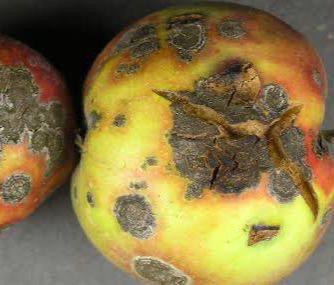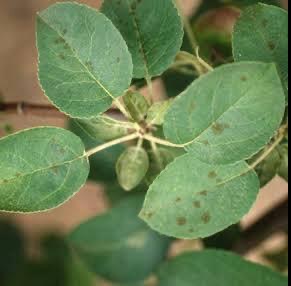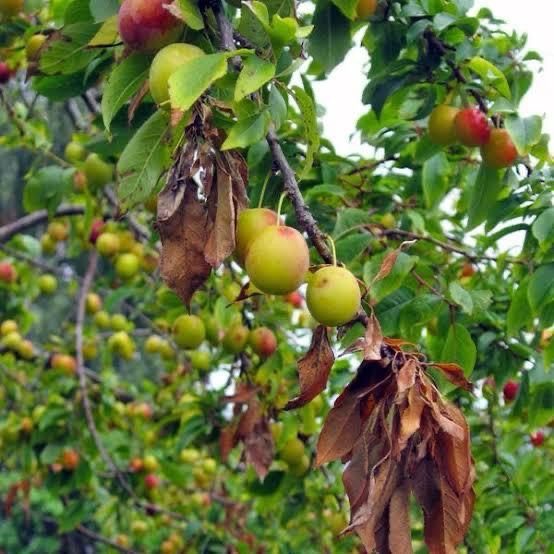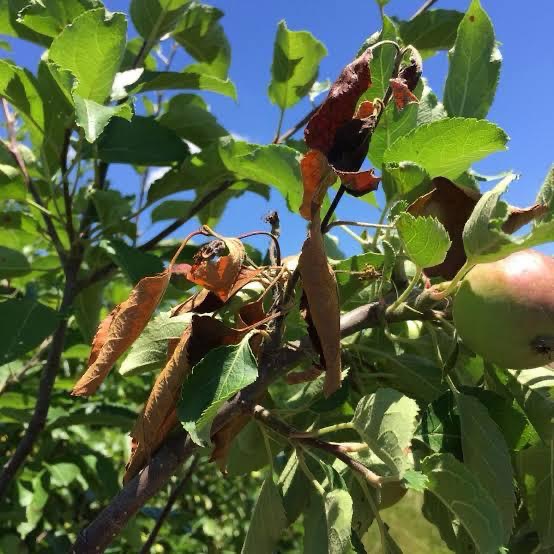Apple Plant
Apple trees, growing 10-30 feet tall in Zones 3-8, flourish in well-drained soil and full sun exposure. They exhibit moderate growth and are known for their edible fruits.
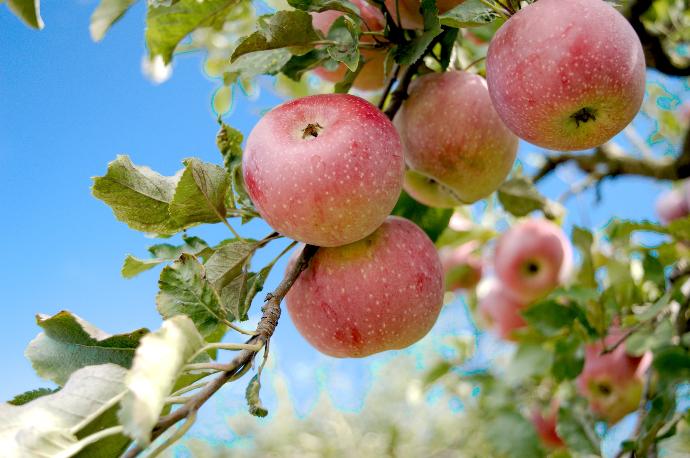
Habit
Tree
Height
10-30 ft
Growth
Moderate
Soil
Well Drained
Shade
Full Sun
Moisture
Moderate
Edible
Yes
Medicinal
No
Origin
Partial shade
Climatic Condition
Moderate
Temperature (°)
No
Humidity (%)
Yes
Potting media
Partial shade
Fertilizers
Moderate
Watering
No
Plant Weight
Yes
Flowering Time
Partial shade
Soil Ph level
Moderate
Water Ph level
No
Soil EC
Yes
Yield Per Plant
Partial shade
NPK ratio
Moderate
life Span
No
Health Benefits
Yes
Suggested Grow Media or Potting Mix ?
50% loamy soil, 30% compost, 20% sand
Suggested Fertigation/Fertilizers
Fertilize in early spring and mid-summer with a balanced fertilizer.
Common Diseases and Remedies
Apple scab, fire blight
Olive green to black spots on leaves, premature leaf drop, wilting, blackening, burned appearance of blossoms shoots, branches . orange spots on leaves.
Choose scab resistance varieties , Pruning infected branches
Synthetic fungicides containing myclobutanil, thiophanate methyl , fenarimol. Antibiotics like streptomycin.
HEALTH BENEFITS
1. Heart Health: High in soluble fiber, which helps lower cholesterol levels. Rich in antioxidants like flavonoid s and polyphenols that support heart function.
2. Weight Management: Low in calories and high in fiber, keeping you full for longer.
3. Digestive Health: Contains pectin, a type of fiber that promotes gut health and aids digestion.
4. Blood Sugar Control: Helps regulate blood sugar levels, reducing the risk of type 2 diabetes.
5. Brain Health: Antioxidants in apples may help protect brain cells and reduce the risk of neurodegenerative diseases.
6. Immune Support: Vitamin C and other antioxidants boost the immune system.
7. Cancer Prevention: Certain compounds in apples have been linked to a reduced risk of cancer, especially in the lungs and colon.
8. Hydration & Skin Health: Apples are about 86% water, keeping you hydrated and supporting healthy skin.
What Is An Apple Tree?
The apple is a small, leafless tree that can reach a height of 3 to 12 meters (9.8 to 39.4 ft). Apples have a wide crown and thick branches. The leaves are arranged alternately and have a simple oval shape. They are 5 to 12 cm long and 3-6 cm (1.2-2.4 in) wide.
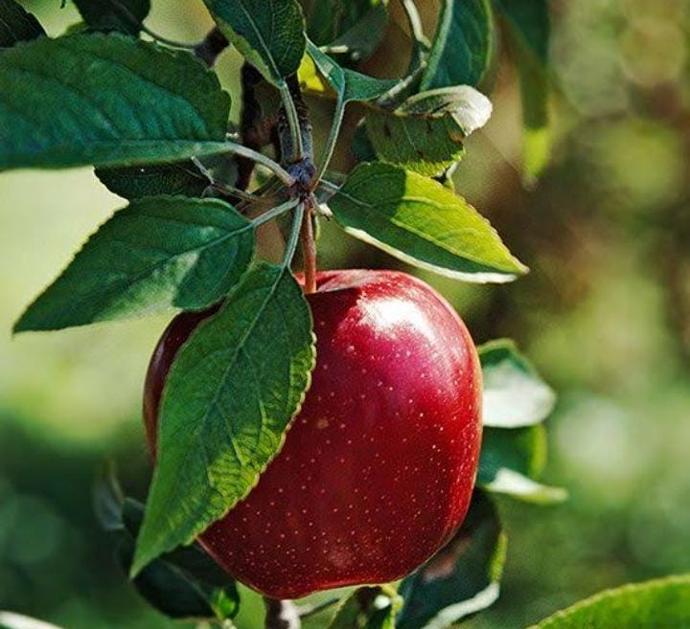
What Are The Different Types Of Apple Plants?
Apples grown from seeds are very different from their parents and the fruit often lacks desirable characteristics. Apple cultivars are grown commercially, including for botanical evaluation, by grafting clonal varieties onto rootstocks. Apples grown without rootstocks are much larger and take much longer to ripen after planting. Rootstocks control the growth rate and size of the resultant tree, making it easier to harvest. There are over 7,500 apple cultivars. Different apple cultivars are developed for different tastes and uses. Cooking, eating raw, cider, or apple juice production are some of the main uses of apples. Trees and fruit can be affected by fungal, bacterial and pest problems. In 2010, the fruit’s genome was sequenced for the first time as part of a wide range of studies on disease control and selection in apple production.
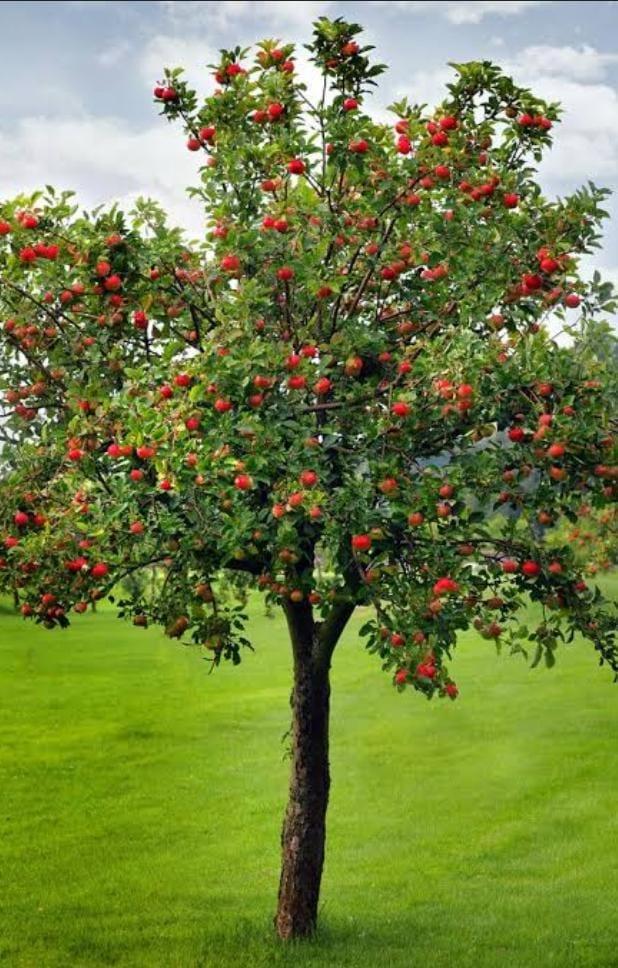
How to care for Apple Plants ?
Throughout the life of the tree, it is necessary to water its roots thoroughly every time it rains during the growing season. Ideally, trees should receive an inch of water per week through rain or water from May through October.
1. Location
It can grow at an altitude of 1500-2700 meters. Rainfalls of 1000-1250 mm evenly throughout the growing season are best to see apples grow and fruit.
2. Sunshine
Apple trees need full sun, so choose a location for the tree that receives at least 8 hours of direct sunlight each day.
3. Soil
Apples grow best in well-drained, loamy soil with a depth of 45 centi-meters and a pH range of 5.5-6.5. The soil should be poor substrate and water-saturated conditions. Heavy clay or dense soils should be avoided.
4. Hydration
Generally speaking, apples need about an inch of rain every seven to ten days. Another way to look at this is to water when the top soil is eight to ten inches dry.
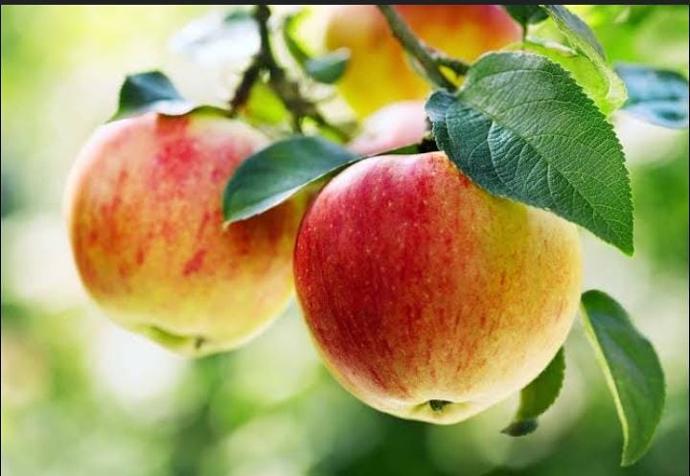
5. Nourishment
To care for your apples, you can use a balanced fertilizer containing nitrogen, phosphorus and potassium. Also make sure the tree receives adequate water, sunlight and proper pruning to maintain its health and productivity. Organic mulch around the base can also help retain moisture and add nutrients to the soil as it decomposes.
6. Issues
Apple trees are affected by diseases such as apple scab, powdery mildew and fire blight. Regular check-ups and appropriate treatments, including fungicides, can help manage these problems . Insects such as aphids, codling moths and apple maggots can damage apples. Using pest control products such as insecticides or beneficial insects can help reduce the spread of disease . Insufficient watering, malnutrition or improper pruning causes fruit growth problems. Follow proper watering schedule, provide proper feeding, and follow proper practices . Bad weather conditions, frost during flowering or insufficient cooling time can affect apple yield. Choose apples suitable for your local climate and be careful when extreme weather conditions occur.
What are the Benefits of the Apple Trees ?
Fruit Production - Apple is a delicious and beneficial fruit that provides valuable nutrients . Aesthetic Value-Apple trees bloom in spring and their branches bear fruit, increasing the beauty of the landscape . Oxygen Production-Like all trees, apples produce oxygen through photosynthesis . Wildlife Habitat-Apple trees attract birds and insects and support biodiversity in the ecosystem . Prevent Soil Erosion-Tree roots help stabilize soil and prevent erosion . Carbon Sequestration-Saplings help reduce climate change by absorbing and storing carbon dioxide . Cultural Importance-Apples have cultural significance in many cultures and are used in cooking . Education-Apple cultivation provides the opportunity to learn about the life cycle of plants.

FAQs About Growing Apple Trees
1. How to maintain Apple plant ?
Water regularly and deeply, especially during the dry season, to balance the soil. Use a balanced fertilizer in spring and summer to ensure your tree gets the nutrients it needs . Use organic mulch around the base to retain moisture, regulate soil temperature and reduce weeds. Provide trees with at least 6-8 hours of sunlight per day to promote fruit growth and development.
2. what are the uses of an apple plant ?
Apples are used in many types of cooking, including cakes, sauces, juices and snacks. Apple plants bloom in spring, beautifying the landscape and adding beauty to gardens and orchards. Some traditional medicines use the material of the apple plant for medicinal purposes, but this is not the case for culinary use.
3. How Can I grow apple plant indoor ?
Select apples or small fruits suitable for growing at home. Use a large container with a drainage hole to ensure proper drainage. Choose a potting mix rich in organic matter. Apple trees support biodiversity in the area by attracting wildlife, including birds and insects.
4. Which pot is best for Apple plant?
To grow apples indoors, choose a large, sturdy pot with good drainage. It is recommended to use a container that is at least 18-24 inches (45-60 cm) in diameter as it provides adequate room for root growth. Make sure the pot has drainage to prevent waterlogging, encourage root growth and prevent root rot.
5. Where can I shop Apple plant?
Visit a nearby nursery or nursery that specializes in growing plants. They often bear a variety of fruit trees, including apple trees.
